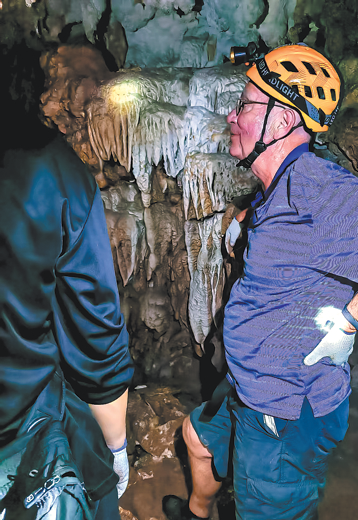Returning to Yunnan, where memory meets the present


I first visited China in 1977, just as the country was opening up to Westerners and, after traveling to Xizang, spent the rest of my time in Yunnan province. To be invited back again after so many years was a wonderful opportunity to see how much had changed.
And changed it certainly has, far more than I could have ever imagined. Dali and Lijiang, once sleepy little towns with scarcely a visitor in sight, are now bustling hubs of domestic tourism. Jinghong, which once felt like a village, has grown into a modern city of 600,000 people.
Back then, people dressed mostly in blue Mao suits or green uniforms, if they were in the army. The roads were filled not with cars but with bicycles and horse carts. I have fond memories of the morning rush hour in Chengdu, Sichuan province, when its wide avenues became a river of thousands of cyclists.
If you wanted to change lanes, it was useless to signal. You just had to go for it, hoping that everyone else would slow down — which they did, of course.
Westerners in those days were an unusual sight and I often got stopped in the street by people who wanted to practice their English. They'd invite me to their homes or to restaurants. In Lijiang, I was taken to the local school. The teacher said that his pupils had never heard English spoken by a native speaker, so I stood in front of the class and told them about London.
Of course, the biggest change is the sheer scale of development, which includes blocks of apartments and an extensive road network. When I was there in 1997, both Dali and Lijiang old towns were where people lived and worked. Now, they're full of tourist shops, and many hotels have been built in the surrounding region. In the past, local ethnic groups in bright costumes would come into town to shop, shyly turning away from cameras. Now, people rent those same costumes for selfies.
The changes have been huge, but also positive. Food in those days was fairly limited, but now there's a wide range. I relished the street food, particularly exotic items like crickets, beetles and caterpillars, but also the food in the restaurants, which was uniformly excellent.
I was also happy that we were not served Western cuisine but enjoyed the best local delicacies, and everyone was expected to use chopsticks.
Our visit was nicely leisurely, allowing me to explore on my own, as well as with the other journalists. Often press trips are so rushed that one barely sees anything, but I felt we really got to experience each place.
Another positive was making friends with the China Daily staff members who were happy to discuss every aspect of the country and its culture. In particular, our guide, Tammy, was outstanding — she went out of her way to satisfy my curiosity. At one point, she even knocked on doors in the backstreets of a village, so I could meet local families and glimpse their lifestyle.
Although I have visited other regions in China since 1977, it was particularly interesting to return to Yunnan in 2025. People were friendly and polite, hotels comfortable and well-run, and the organization faultless. The region is beautiful, still quite rural, and well worth exploring.
My personal highlight of the trip was exploring a cave network in Xishuangbanna — with the only light coming from my helmet, I had to crawl on my hands and knees through tiny passageways on slimy mud. This was a true Yunnan adventure.
The author is a travel journalist, writer, photographer and TV producer from the UK. His special interests are food, wine and outdoor adventure.

Today's Top News
- China warns Japan against interference
- Nation's euro bond sale shows investors' confidence
- No soft landing for Tokyo's hard line
- Commerce minister urges US to increase areas of cooperation
- Strong demand for China's sovereign bonds signals global confidence
- Ministry urges Japan to 'maintain self-respect'






























